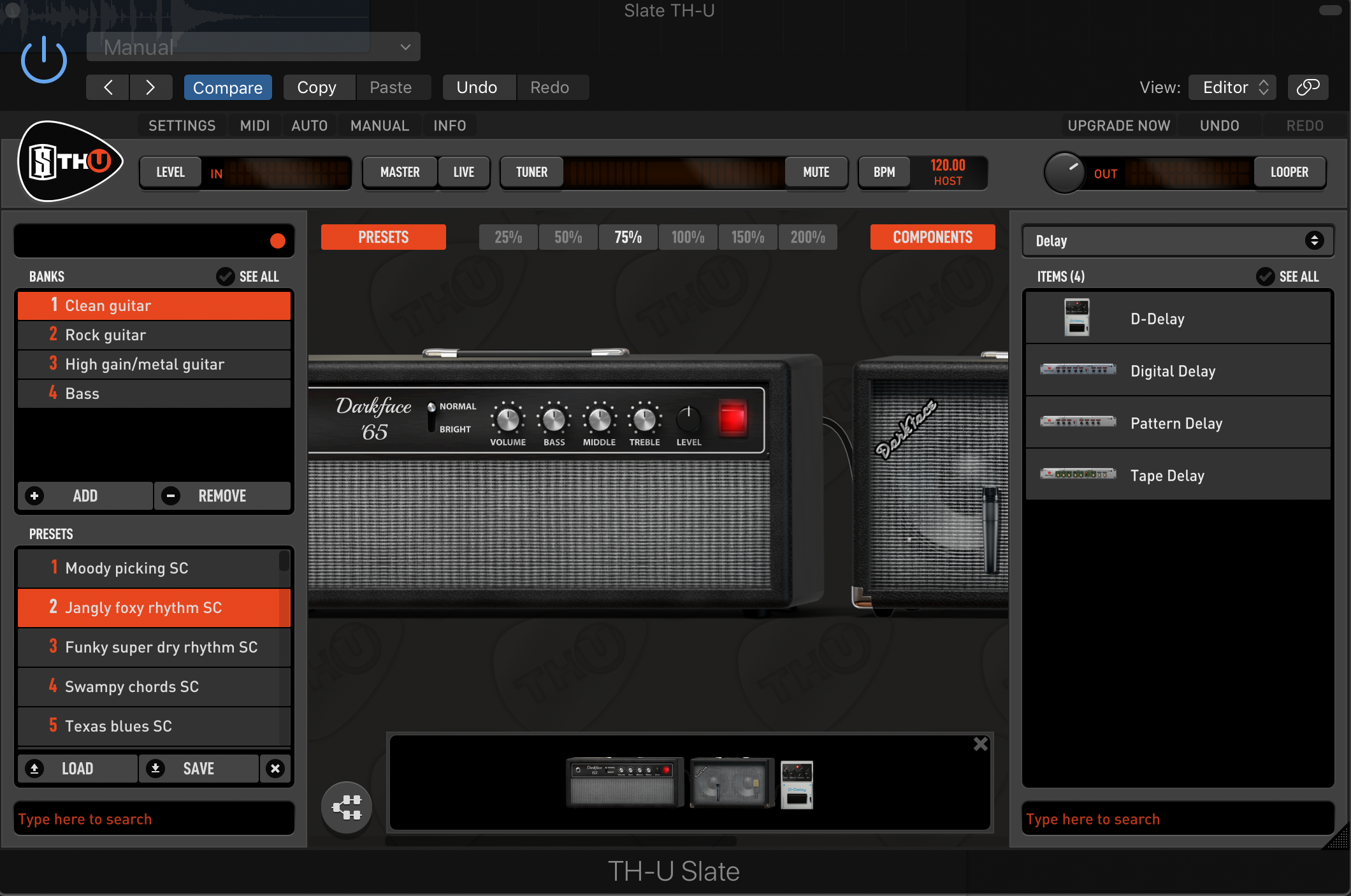I was looking around my audio plugins folder on my computer the other day and realised that I have a lot of guitar modeller plugins that I have collected over the years. It’s been a while since I have done any sort of shootout between them to compare, so I thought I would use this Easter long weekend to tackle this mini project.
I want to concentrate on clean Fender-y sounds this time, and what better way to test out the Strat build I just completed a couple of months ago. I just finished doing more setup work on this guitar and am enjoying playing it again.
The Guitar
It is a Lake Placid Blue Strat, with a baked maple neck. It has a set of BareKnuckle “Irish Tour” pickups in it, and I used the middle position for this experiment.
Guitar was plugged straight into my PC via an Apogee Element 46 audio interface, then routed to Logic X.
The Method
What I did was to record a short dry track into Logic X on my iMac, then copy and paste that dry track onto different channels where I set up different modellers. This way there would be NO bias towards a certain track due to my different playing styles over time. The same dry track would ensure that the input signal was consistent across all modellers.
On each modeller, to ensure some kind of consistency, I also set all knobs to ‘5’ on the amp face. I turned off any Boost or Bright switches to ensure as raw a tone as possible. I also tried to use the same 2x12 cab where possible, with a ‘57 Condenser mic placed at the 2 inches from centre and 2 inches away.
I also used a delay pedal as the only pedal in the chain for most of the modellers - set at around 250ms delay with minimal feedback and mix. Some modellers didn’t support effects pedals in the amp signal chain, so in those cases I used a separate pedal plugin by the same manufacturer to get the delay pedal in the chain (e.g. Bias and Logic)
The Modellers
Here are the 5 modellers I used, with a screenshot showing the settings that I set each amp, cab and delay pedal at.
Logic X
Yep, I admit that one of the tracks here is using the plain old in built amp modeller from Logic, mainly because I wanted to see how it compared against the other more ‘serious’ modelling plugins.
Amplitube 4
This is probably the modeller I have been using the longest - since Amplitube 2 days!
Slate TH-U
This is the newest modeller the I only got this week, and which prompted me to do this shootout.
S-Gear
Probably my favourite modeller which I use the most. This is usually my go-to solution for recording guitars these days.
Bias 2
I admit that I bought this modeller last year sometime, but just haven’t got around to using it much at all.
The Results
Here is my SoundCloud link to the sound samples for each modeller.
I may refrain from stating which modeller is which sound sample for now (No, they are NOT in the order of the modellers I listed above!). I will wait to see which ones people prefer in ‘blind’ mode first, then reveal all in a couple of weeks! <evil laugh>
UPDATED:
The modellers in the sound clip were in this order:
Amplitube 4
S-Gear 2
Bias 2
Slate TH-U
Logic X









